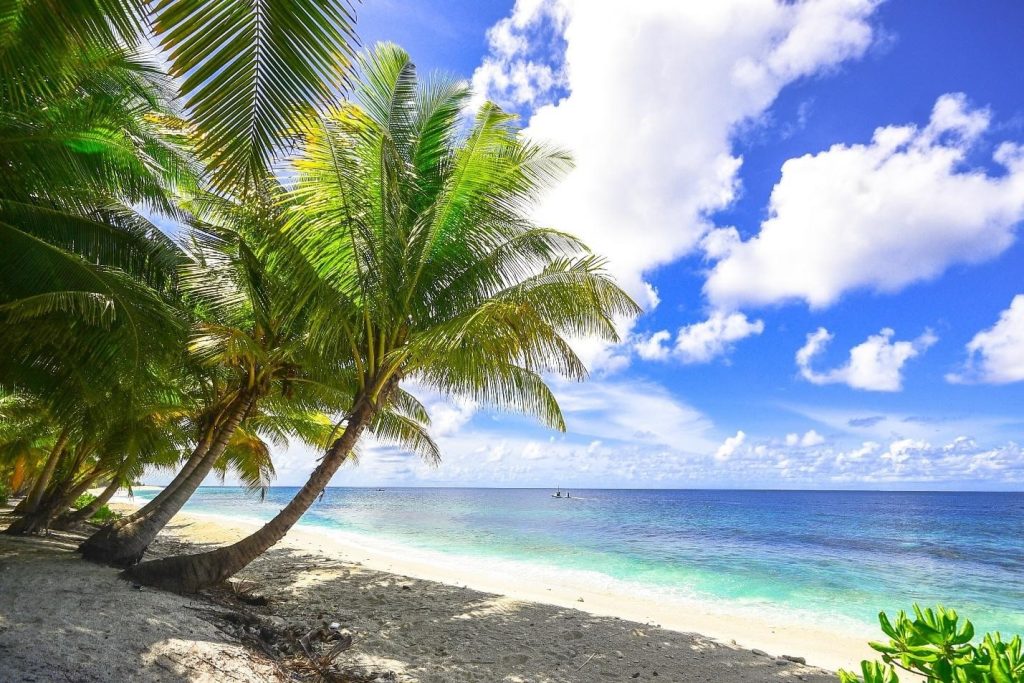Are Palm Trees Native to California: Exploring the Fascinating Connection between California and its Palm Trees
California is home to diverse flora and fauna, but few species are as iconic and fascinating as the native palm trees that dot its landscape.
These magnificent trees have played an important role in the state’s history, culture, and ecology and continue to be an integral part of its identity.
In this article, we will explore the rich and complex connection between California and its native palm trees.
We will also be answering some frequently asked questions, examining their history and significance, and highlighting their many benefits to the region’s ecosystem.
California’s native palm trees are a diverse group of species that are uniquely adapted to the state’s arid climate.
These trees have been an important part of California’s ecosystem for thousands of years, providing food and shelter for a wide range of wildlife, including birds, mammals, and insects.
The most iconic of California’s native palm trees is the California fan palm (Washingtonia filifera), which is found throughout the state’s southern regions.
This tree has a maximum height of 75 feet and can be identified by its unique fan-shaped leaves.
Other native species include the desert fan palm Washingtonia robusta, Brahea armata, and Washingtonia robusta).
History of Palm Trees in California

Palm trees have a long and storied history in California, dating back thousands of years to the time when indigenous communities first settled in the region.
Palm trees were a vital resource for these communities, providing food, shelter, and materials for a wide range of uses.
When Spanish colonizers arrived in California in the 18th century, they were impressed by the state’s native palm trees and began cultivating them for use in their own communities.
Over time, palm trees became a symbol of California’s warm and sunny climate and were planted extensively throughout the state.
Benefits of Palm Trees in California’s Ecosystem
- As mentioned before, palm trees play an important role in California’s ecosystem, providing food, shelter, and habitat for a wide range of wildlife.
- Many species of birds and mammals rely on palm trees for nesting and roosting, and insects such as bees and butterflies use palm trees as a source of nectar.
- In addition to their ecological benefits, palm trees are also an important cultural resource for indigenous communities in California.
- These communities have long relied on palm trees for food, medicine, and materials for crafts and construction.
Types of Native Palm Trees in California
California is home to several species of native palm trees, including the California fan palm, the Mexican fan palm, and the blue palo verde.
These trees have been a part of California’s landscape for thousands of years and have played an important role in the state’s history and culture.
California fan palm
The California fan palm, also known as the Washingtonia filifera, is the only palm tree native to California.
It can be found in several regions throughout the state, including the Coachella Valley, the Mojave Desert, and the San Joaquin Valley.
This tree can grow up to 75 feet tall and is known for its fan-shaped leaves and edible fruit.
Washingtonia robusta
The Mexican fan palm, also known as the Washingtonia robusta, is another species of palm tree commonly found in California.
This tree is native to Mexico but has been introduced to California and other parts of the world. It can grow up to 100 feet tall and is known for its tall, slender trunk and fan-shaped leaves.
Ultimately, each species of palm tree in California has its own unique requirements for growth and survival, and they can be found in different regions throughout the state.
Some species prefer dry, rocky soils, while others thrive in moist, well-drained soils.
Importance of Preserving California’s Native Palm Trees

California’s native palm trees are an important part of the state’s cultural and ecological heritage, and they face several threats that could lead to their decline or extinction.
- Habitat loss, climate change, and invasive species are all major factors that are impacting these trees, and it is important that we take action to protect and preserve them.
- Preserving California’s native palm trees is important for the trees themselves and the many species of wildlife that rely on them for food and shelter.
- In addition, these trees are an important part of California’s cultural history and serve as a reminder of the state’s rich and diverse heritage.
Threats to California’s Native Palm Trees
California’s native palm trees are facing several threats that are putting their survival at risk.
- Loss of habitat is one of the biggest threats as development and urbanization continue encroaching on the state’s natural habitats.
- Climate change is also a major concern, as rising temperatures and changing weather patterns can significantly impact the trees’ growth and survival.
- Invasive species are another major threat to California’s native palm trees.
- Non-native species such as the red palm weevil and the South American palm weevil can cause significant damage to palm trees.
- They are difficult to control once they become established in an area.
Efforts to Protect and Restore California’s Native Palm Trees
Despite the many threats facing California’s native palm trees, several efforts are underway to protect and restore these valuable trees.
Conservation organizations and government agencies are working to preserve and restore palm tree habitats.
Research is being conducted to better understand the needs and requirements of these trees.
In addition, there are many ways that individuals can help to protect and preserve California’s native palm trees.
Planting native species in your yard, supporting conservation organizations, and educating others about the importance of these trees are all important steps that can help to ensure their survival.
Fun Facts about California’s Native Palm Trees
Did you know that palm trees are not actually trees at all? In fact, they are a type of grass, and the “trunk” of a palm tree is actually made up of the bases of old leaves.
Also, palm trees are not native to California; they actually originated in Africa and were brought to California by Spanish colonizers.
In addition, palm trees have played an important role in many cultures throughout history.
They were considered sacred by ancient Egyptians and have been used as a symbol of victory and triumph throughout history.
Places to See California’s Native Palm Trees
If you’re interested in seeing California’s native palm trees up close, there are many places throughout the state where you can do so.
The Coachella Valley Preserve and Joshua Tree National Park are both home to large populations of California fan palms.
At the same time, Anza-Borrego Desert State Park is home to the largest native palm oasis in California.
In addition, many cities throughout California have planted palm trees along their streets and in public parks, providing opportunities to see these iconic trees in an urban setting.
Are Palm Trees Native to California FAQS
Q: What Is The Tallest Palm Tree In California?
The tallest palm tree in California is the Mexican fan palm, which can have a maximum height of around 100 feet.
Q: Are All Palm Trees In California Native?
No, not all palm trees in California are native. Many species of palm trees have been introduced to California from other parts of the world.
Q: Do Palm Trees Have Any Cultural Significance In California?
Yes, palm trees have played an important role in California’s history and culture. They are often associated with the state’s Spanish and Mexican heritage and are a common symbol of California.
Q: Are Palm Trees Good For The Environment?
Yes, palm trees are beneficial to the environment. They provide habitat for wildlife, help prevent soil erosion, and can help reduce greenhouse gas emissions.
Q: Can You Eat The Fruit Of A California Fan Palm?
Yes, the fruit of a California fan palm is edible and has been used by Native Americans and early settlers as a source of food.
Wrapping Up
California’s native palm trees are a fascinating and important part of the state’s cultural and ecological heritage.
These trees have been an important resource for indigenous communities for thousands of years, and they continue to provide food and shelter for a wide range of wildlife today.
However, these trees are facing a number of threats that are putting their survival at risk, and we must take action to protect and preserve them.
By supporting conservation efforts, planting native species in our yards, and educating others about the importance of these trees, we can help ensure that they continue to thrive in California for generations.

My name is Olivia, and I live in the United States and love having plants in my garden. Lots of plants are there on my balcony, indoor and outdoor garden also. Here I am trying to share useful gardening tips, how to grow and care for various plants, etc.

